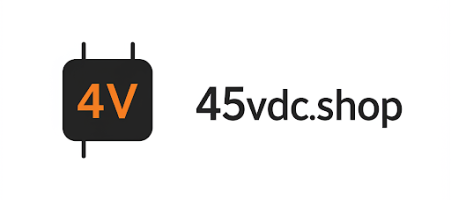Obtaining funding for your small business can be a daunting task, especially navigating the complexities of government business loans. This article demystifies the process, offering actionable strategies and insider perspectives to improve your chances of approval. We will explore effective approaches to finding, preparing for, and securing these loans, along with personal insights on how to avoid common pitfalls.
The quest for government business loans for small businesses often feels like navigating a maze. The key is to shift from a passive recipient to a proactive strategist. Many entrepreneurs make the mistake of applying for every loan they find, hoping something will stick. A more effective approach involves meticulous research, targeted applications, and a clear understanding of what lenders are looking for.
Knowing What You Need: Assessing Your Business’s True Funding Requirements
Before diving into the application process, thoroughly assess your business’s needs. Are you looking for capital to expand operations, manage cash flow, purchase equipment, or something else? Precisely defining your funding requirements will allow you to target the right loan programs and avoid over-borrowing, which can strain your finances. Consider creating a detailed financial forecast outlining your projected revenues and expenses, as well as a clear explanation of how the loan will contribute to your business’s growth.
SBA Loan Programs: Your First Stop
The Small Business Administration (SBA) doesn’t directly lend money. Instead, it guarantees a portion of loans made by participating banks and credit unions, reducing the lender’s risk and making them more likely to approve your application. Explore SBA’s 7(a) Loan Program, the 504 Loan Program, and the Microloan Program. Each has different eligibility requirements, loan amounts, and interest rates. Understanding these differences is crucial to selecting the most suitable option. You can learn more about SBA loan programs on the SBA website: https://www.sba.gov/
State and Local Government Programs: Untapped Resources
Don’t overlook state and local government loan programs. These often have less stringent requirements and may be specifically designed to support businesses in certain industries or geographic areas. Research your state’s economic development agency and local city or county government websites for available funding opportunities. These programs might offer grants, low-interest loans, or tax credits.
Even with a great business idea, a poorly prepared application can lead to rejection. Here’s how to build a strong case for your loan.
Crafting a Compelling Business Plan: Showcasing Your Vision
A comprehensive business plan is essential. Your plan should clearly articulate your business’s mission, target market, competitive advantage, financial projections, and management team. It should demonstrate that you have a well-thought-out strategy for success and a clear understanding of your industry. Highlight your experience and expertise, and address any potential risks or challenges.
Financial Statements: Demonstrating Stability and Potential
Lenders will scrutinize your financial statements, including your income statement, balance sheet, and cash flow statement. Ensure your financials are accurate, up-to-date, and presented in a clear and organized manner. If you’re a startup, project realistic financial forecasts based on thorough market research. If you’re an existing business, demonstrate a track record of profitability and responsible financial management.
Credit Score and Collateral: Meeting Lender Requirements
A good credit score is crucial for loan approval. Check your credit report and address any errors or inconsistencies. If your credit score is low, take steps to improve it before applying for a loan. Lenders may also require collateral, such as real estate, equipment, or inventory, to secure the loan. Be prepared to provide documentation of your collateral’s value.
Having gone through the process multiple times, I’ve learned some valuable lessons that aren’t typically found in official guides.
Building Relationships with Lenders: It’s About More Than Just the Numbers
Don’t treat the application process as a purely transactional one. Build relationships with lenders by attending networking events, participating in industry conferences, and scheduling meetings to discuss your business. This allows you to understand their lending criteria, showcase your passion, and make a lasting impression. Remember, lenders are more likely to invest in people they trust.
The Art of Negotiation: Don’t Be Afraid to Advocate for Yourself
Loan terms are often negotiable. Don’t be afraid to negotiate interest rates, repayment schedules, and other loan conditions. Research prevailing market rates and be prepared to present a strong case for why you deserve favorable terms. However, be realistic and avoid making unreasonable demands that could jeopardize the deal.
Persistence Pays Off: Don’t Give Up Easily
Rejection is a part of the process. If your application is denied, don’t be discouraged. Ask the lender for specific reasons for the denial and address those issues before reapplying or applying to another lender. Sometimes, a simple adjustment to your business plan or financial projections can make a significant difference.
While government loans are attractive, they’re not the only option. Consider these alternative funding sources:
Crowdfunding: Leveraging the Power of the Crowd
Crowdfunding platforms like Kickstarter and Indiegogo allow you to raise capital from a large number of individuals in exchange for rewards or equity. This can be a great way to validate your business idea, build a community of supporters, and secure funding without incurring debt.
Angel Investors and Venture Capitalists: Seeking High-Growth Funding
Angel investors and venture capitalists invest in high-growth potential startups in exchange for equity. This type of funding is typically more suitable for businesses with significant scaling potential and a strong management team. Be prepared to give up a portion of your company’s ownership and control.
Bootstrapping: Funding Growth from Internal Resources
Bootstrapping involves funding your business using your own savings, revenue, and other internal resources. This approach allows you to maintain full control of your company and avoid debt. However, it may limit your growth potential and require significant personal sacrifices.
Securing government business loans isn’t just about what you do right, but also about avoiding common mistakes.
Lack of Preparation: Rushing the Application Process
A rushed application is a recipe for disaster. Take the time to thoroughly research loan programs, prepare a comprehensive business plan, and gather all required documentation. Avoid submitting incomplete or inaccurate information, as this can damage your credibility.
Over-Optimistic Projections: Unrealistic Financial Forecasts
While it’s important to be confident in your business’s potential, avoid creating unrealistic financial projections. Lenders will scrutinize your forecasts and compare them to industry benchmarks. Overly optimistic projections can raise red flags and lead to rejection.
Neglecting Compliance: Ignoring Regulations
Ensure your business is in compliance with all applicable laws and regulations. Lenders will conduct due diligence to verify your compliance status. Violations of environmental, labor, or other regulations can jeopardize your loan application.
By understanding the landscape of government business loans for small businesses, preparing a compelling application, building relationships with lenders, and avoiding common pitfalls, you can significantly increase your chances of securing the funding you need to grow your business. Remember, persistence, preparation, and a strategic approach are key to success.
As a seasoned business consultant with over 15 years of experience helping small businesses secure funding, I’ve seen firsthand the challenges and opportunities that entrepreneurs face. My expertise lies in crafting compelling business plans, navigating the complexities of government loan programs, and building strong relationships with lenders.
My insights are based on years of practical experience and a deep understanding of the small business landscape. I’m committed to providing accurate, up-to-date information and actionable advice to help you achieve your funding goals.
Here is a table summarizing the key points about Government Business Loans for Small Businesses:
| Loan Type | Administered by | Key Features | Ideal For |
|---|---|---|---|
| SBA 7(a) | SBA, via lenders | General purpose, flexible use of funds | Working capital, equipment purchases, real estate, business acquisition |
| SBA 504 | SBA, via CDCs | Long-term fixed assets (real estate, equipment) | Purchasing or improving fixed assets |
| SBA Microloan | SBA, via intermediaries | Small loans (up to $50,000) | Startups, working capital, inventory, supplies |
| State/Local Loans | State/Local Gov’t | Varies by program, often industry or location-specific | Businesses in specific sectors or geographic areas, job creation |
About us
Welcome to 45vdc.shop – Your Ultimate Resource for Stock Market & Loan Mastery! Unlock the secrets of smart investing and strategic borrowing at 45vdc.shop. Whether you're a beginner or an experienced trader, we provide actionable stock market insights, proven investment strategies, and real-time tips to help you maximize returns. Need financial flexibility? Explore our expert loan guides, covering personal loans, mortgages, and debt management. Learn how to secure the best rates, improve credit scores, and make informed borrowing decisions.

